Future of threatened brutalist building reimagined
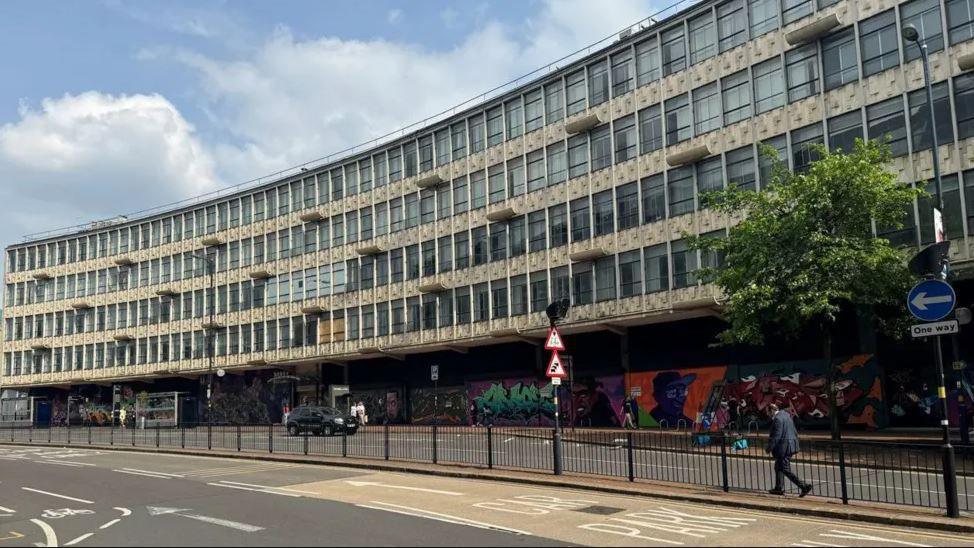
The 1960s office block on Smallbrook Queensway is set to be knocked down and replaced with residential apartment blocks
- Published
Birmingham's brutalist Ringway Centre, earmarked for demolition, could be repurposed, the city's students of architecture said.
They have come up with designs which would see the 1960s curved office block which lines Smallbrook Queensway transformed into a hub for arts or cultural spaces.
The James Roberts-designed modernist building is set to be knocked down in February and replaced with residential apartment blocks.
Campaigners have long fought to save the "irreplaceable" building, and have launched a legal challenge.
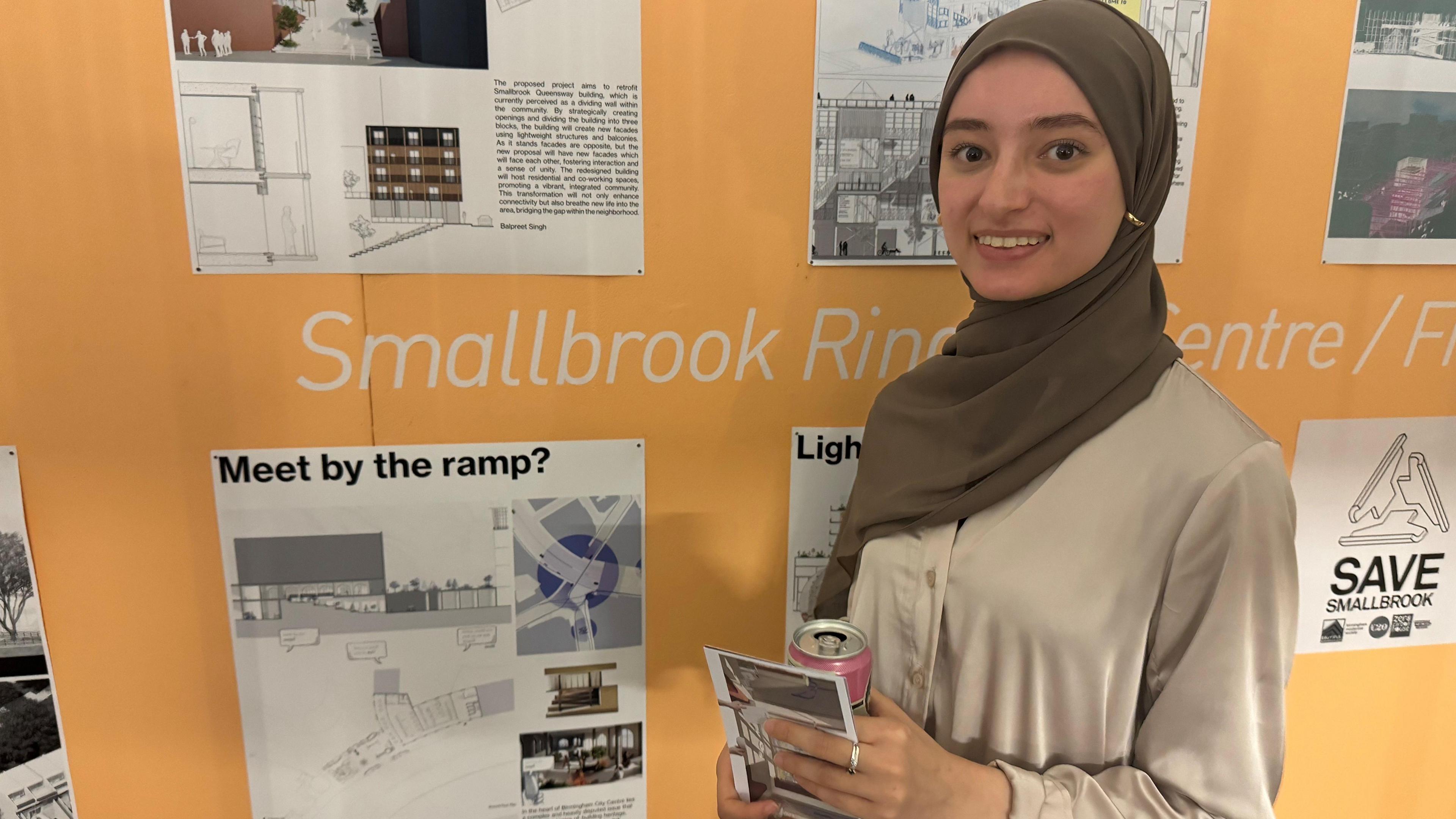
Widuri Clare proposed reimaging the site as a meeting point for residents of Birmingham
Speaking at a graduate show for the Birmingham School of Architecture and Design lecturer Dr Michael Dring, said campaigners were feeling "optimistic."
This year, his students participated in a project called Inhabiting The City Wall, which looked at how the building could be reworked and reused.
Masters student, Widuri Clare's project Meet By The Ramp, aimed to tackle the perception that Smallbrook Queensway was “acting like a wall” between different parts of the city.
The Ringway Centre could "act as a threshold" and meeting point, and have new areas such as a indoor garden, food court, playground and a pharmacy, she said.
“I used this idea of the ramp to create this indoor kind of garden.
"To encourage people to travel between those two levels, to bridge that gap and change their perception of Smallbrook acting like a wall.”
There was also a “huge opportunity” to think of how demolishing the Ringway Centre would impact on climate change and sustainability, she added.
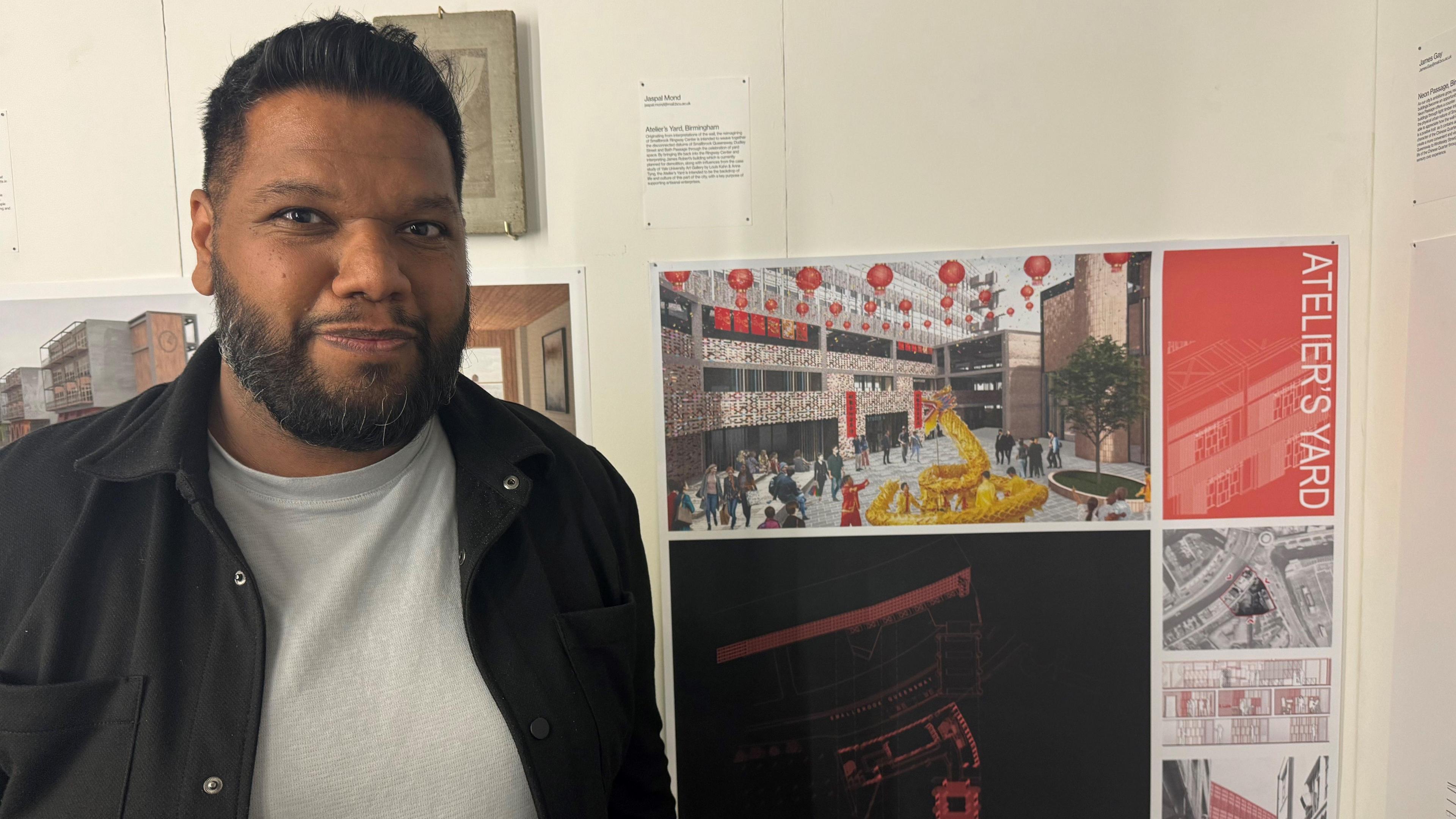
Jaspal Mond's design focuses on a celebration of yard space to "bridge the gap" between two areas of the city
Jaspal Mond, a third-year part-time student at BCU, explained how his project, called Atellier's Yard, was focused on the "gentrification of yard space."
His idea was to create "a space that would infuse art with culture," given that the Ringway Centre was situated on a corner with the Chinese Quarter on one side and the Gay Village on the other.
The two areas were separated but his design could bring them together.
“I think the that’s one asset of Smallbrook Queensway is that it does do that, it bridges that gap," Mr Mond explained.
“I think it would be a real shame to lose the Ringway centre, because there’s a “lot of really intricate details that make this building what it is.
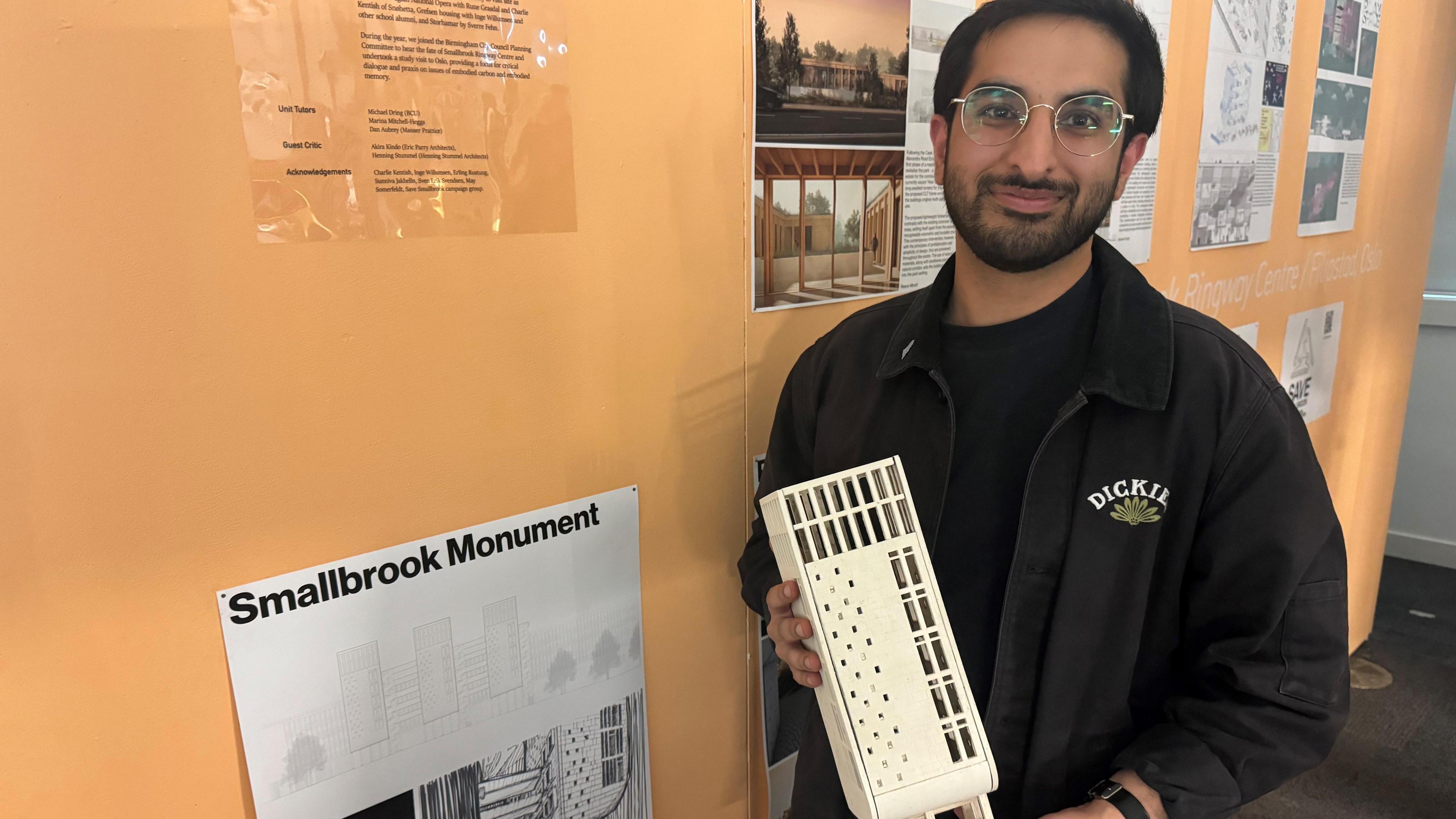
Mohid Ullah Khan said he thinks the building on Smallbrook Queensway should be retrofitted
Mohid Ullah Khan, said his project proposed adding an "auxiliary" and “companion” building which sat directly in front of the Ringway Centre and would therefore leave the original block "untreated" as it was.
“Why should we tear down something that’s been a part of Birmingham history for so long?," he asked.
“I think there’s a space for retrofitting it… and celebrating the existing building. It just deserves a bit of celebration as a bit of Birmingham history," he said of his Smallbrook Monument project.
Mr Khan described the building as "kind of gorgeous" and praised the architecture and curved design.
Follow BBC West Midlands on Facebook, external, X,, external and Instagram, external, Send your story ideas to: newsonline.westmidlands@bbc.co.uk, external
Related topics
- Published13 May 2024
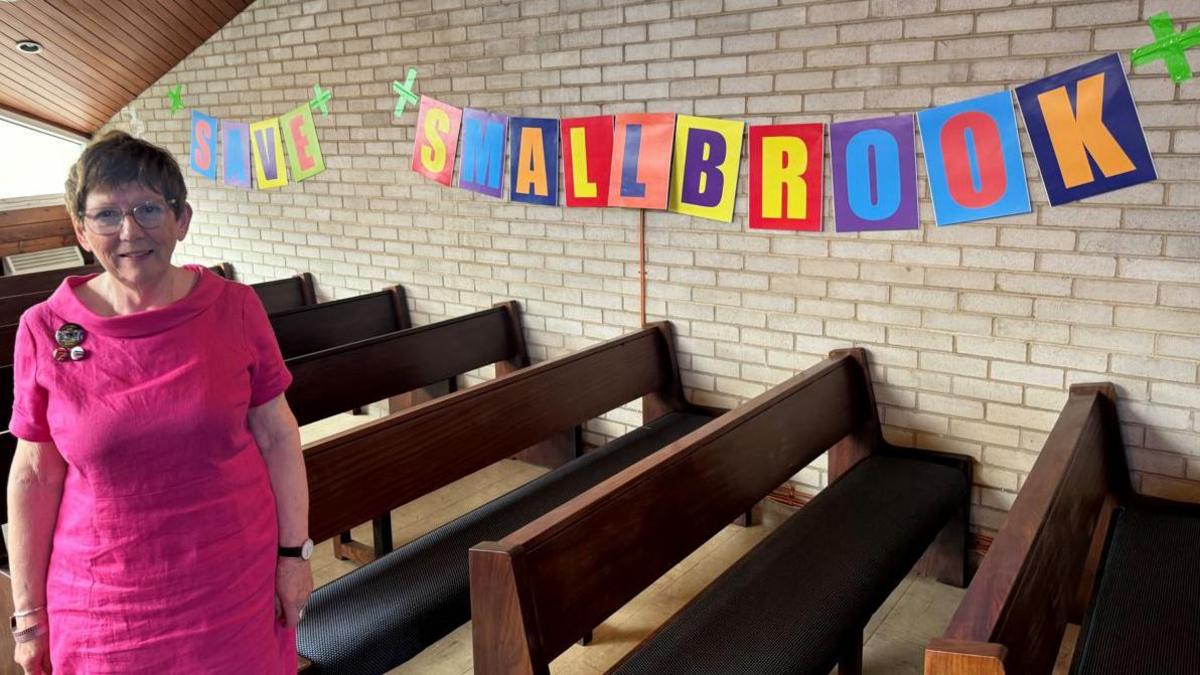
- Published1 February 2024
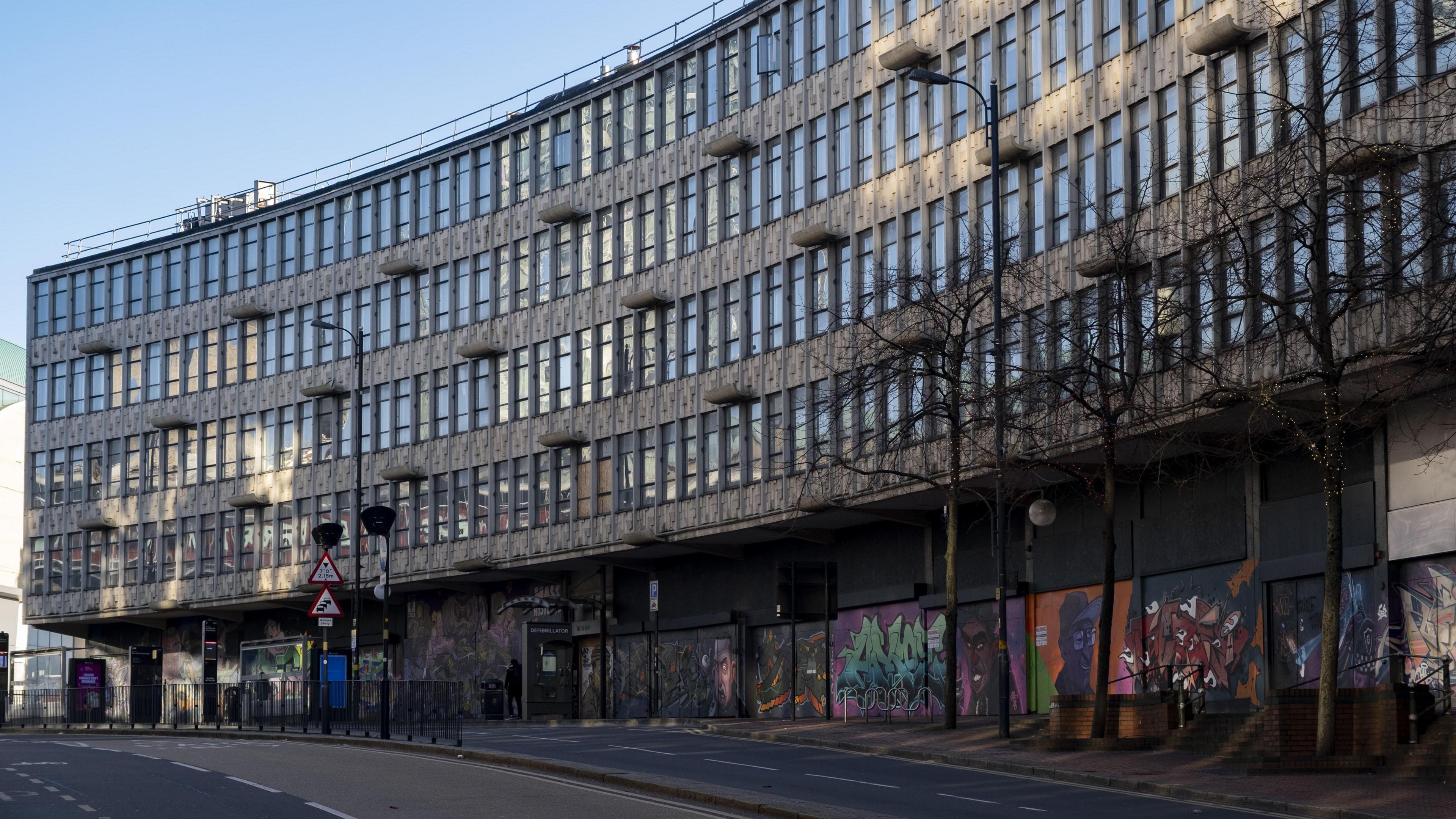
- Published27 February 2023

- Published28 September 2023
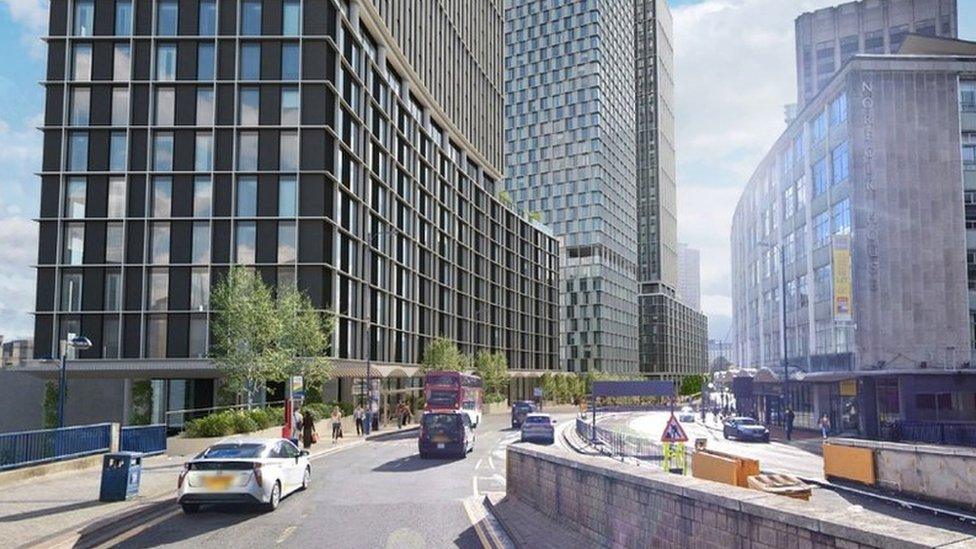
- Published27 December 2023
